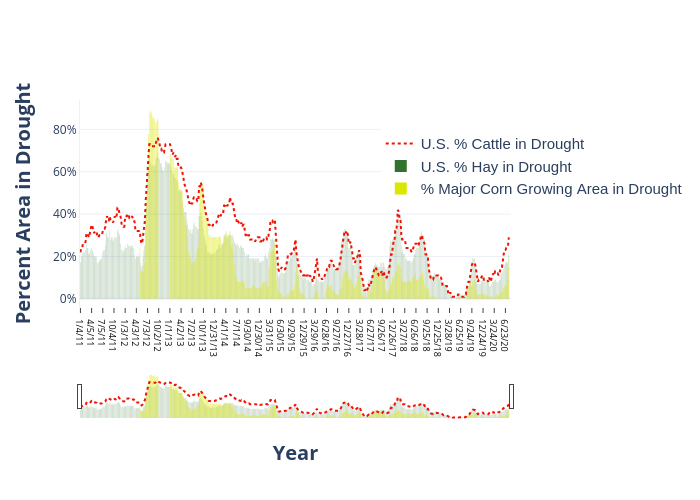By the N#mbers for the Week of May 6, 2019: Rain Just Keeps Coming
- Chad McNutt
- May 9, 2019
- 6:02 pm
$1 billion in damages with lost cattle and property damage
The amount of damage caused by natural disasters this winter and spring in Nebraska. It’s an understatement to say it’s been a difficult winter and spring for cattle producers there. To show support for cattle producers Governor Pete Ricketts declared May as Beef Month in Nebraska. [The Grand Island Independent]
6” rainfall last 7-days…..5” rainfall over the next 7
The amount of rainfall Atoka, Pushmataha, Coal, and Johnston Counties in Southeast Oklahoma received over the last week and the amount they are expected to get over the next week. If you’re counting that could be 11-12” or more of precipitation in two weeks. The average precipitation for April and May is about 11”. That shouldn’t be a problem.
51 days since significant rainfall has fallen
With all this rainfall could anyone be dry? Well, the folks out in The Texas/Oklahoma Panhandle could answer that question. It has been 51 days since parts of Texas and Cimarron Counties in Oklahoma have received a quarter inch or more of rainfall. Over the next week this streak could be broken as the Panhandle could see a half-inch or more of rainfall. Fingers crossed.
15 percent of the corn crop had been planted by April 28
The five-year average is 27%. Extremely wet soils and continued precipitation has caused planting delays across the Corn Belt. The period between September 2018 and March 2019 has been the wettest 7-month period for the Midwest on record. The 7-day Accumulated Precipitation Forecast for the Midwest is not helping the situation and will likely delay planting to mid-May. If conditions don’t improve, we could see a reduction in acres plated or lower yields. [Reuters]






